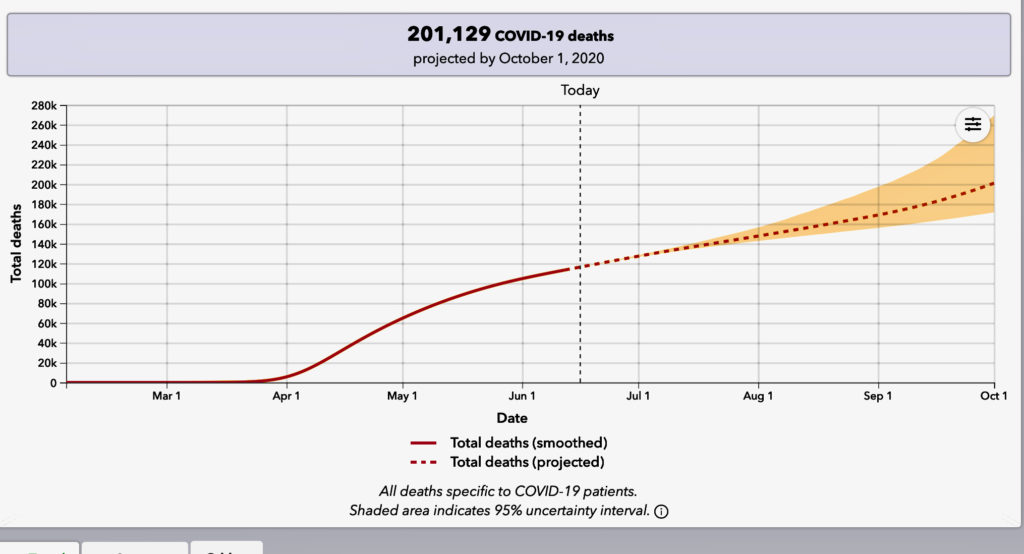From the Institute for Health Metrics and Evaluation

The University of Washingtons Institute for Health Metrics and Evaluation (IHME) now predicts that by October 1st an estimated 169,890 Americans will have died from COVID-19.
The IHME prediction model is one of many that has been used by health officials to guide their response to the pandemic that has killed more than 116,000 in the U.S., and more than 436,000 worldwide.
IHME says deaths in the U.S. are predicted to remain fairly level through August and begin to rise again in the fourth week of August with a more pronounced increase during September, although some states will see the increase earlier due to increased mobility and relaxation of social distancing mandates.
“We’re now able to look ahead and see where states need to begin planning for a second wave of COVID-19,” said IHME Director Dr. Christopher Murray. “We hope to see our model proven wrong by the swift actions governments and individuals take to reduce transmission.”
The model includes data through June 6, 2020. Large gatherings in some states due to lifting of social distancing restrictions, gatherings on national holidays, and public protests are reflected in the general trend toward increased mobility.
IHME has updated its model used for forecasting COVID-19 deaths and infections. The model now includes mobility data, testing, pneumonia seasonality (expected to be similar to COVID-19 seasonality), mask use, population density, air pollution, low altitude, annual pneumonia death rate, smoking, and self-reported contacts as covariates.
Based on IHME’s analysis, mask use results in up to 50% reduction in transmission of COVID-19.
States with the highest numbers of deaths by October 1 include:
- New York: 32,310 (range between 31,754 and 33,241)
- New Jersey: 13,177 (12,881–13,654)
- California: 8,821(7,151–12,254)
- Michigan: 8,771 (7,098–14,743)
The states with the earliest uptick in deaths, according to current modeling, are Florida, Arizona, Georgia, and Colorado.
“If the US is unable to check the growth in September, we could be facing worsening trends in October, November, and the following months if the pandemic, as we expect, follows pneumonia seasonality,” Dr. Murray said.
Increasing travel in some states, as well as the overlap with the flu season, are likely to impact hospital demand for services in fall and winter.
The new death projections and other information, such as hospital resources usage, are available at https://covid19.healthdata.org/united-states-of-america.


